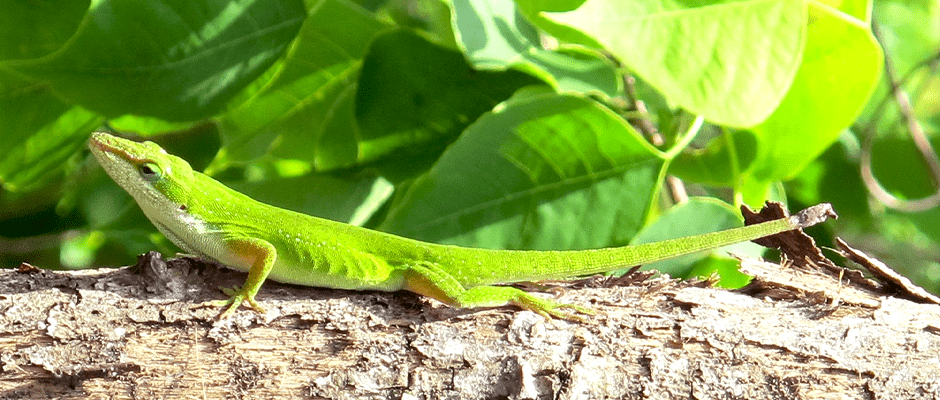Share this article
Southeastern lizards adapt quickly to extreme weather
In one of the fastest, most well-documented instances of adaptation, lizards in the southeastern United States developed a tolerance to lower temperatures in response to a recent severe winter.
“Extreme weather events can produce rapid, strong selective pressures in natural populations,” said Shane Campbell-Staton, first author on the paper published in Science.
In the winter of 2013 to 2014, a polar vortex swept through the southeastern United States. Campbell-Staton, now an NSF postdoctoral fellow at the University of Illinois and University of Montana, had just been conducting graduate research on the evolution of cold tolerance and patterns of local adaptation in green anoles (Anolis carolinensis) from southern Texas to eastern Oklahoma. After a photo in a newspaper of an upside-down dead lizard in the snow caught his eye, he decided to collect another round of data to reexamine cold tolerance in the storm survivors.
“In the southernmost populations in Texas, survivors of the extreme weather event could maintain function at significantly colder temperatures than before the winter storms,” Campbell-Staton said.
He and his colleagues used a lizard’s ability to right itself when flipped on its back as an indicator of being functional enough to escape fatal conditions. The researchers noted that after the storm, the animals in the south could get back on their feet at lower temperatures.
Genetic analyses revealed that the storm-induced selection on the southern populations went even deeper. The way the survivors’ genes were physically expressed resembled the way they were expressed in northern populations, Campbell-Staton said. He explained that regions of the genome that may be involved in regulating thermal function appeared different from what they had looked like before the cold snap in the southern population, regions which also may be under local adaptation across the species’ range.
But none of this means populations can instantly adapt to impending changes in climate that’ll bring various kinds of increasingly frequent severe weather, Campbell-Staton said.
“Animals that did not survive this weather event may have had the genetic variants and physiological capabilities to survive a heat wave or drought,” he said. “Because of this selection event, some lineages better able to survive a different type of weather event may be lost.”
Since the late 1800s, scientists have demonstrated that they can measure natural selection in real time in animals ranging from house sparrows to sheep, Campbell-Staton said. But this is the first study to observe the process unfold over just one year at so many levels of biological hierarchy — organism function, gene expression and the genome, he said.
Now that a few generations have been born since the polar vortex, Campbell-Staton’s team is returning to the field. They’ll determine how persistent the increased cold tolerance in the southern green anole populations has been and confirm whether the extreme weather event caused evolutionary change.
Header Image: An adult male green anole climbs down a tree in Brownsville, Texas, in the summer of 2013. ©Alexander Jaffe








